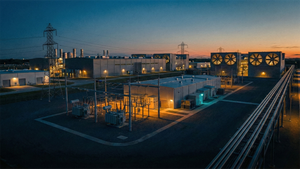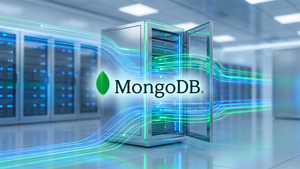
South Korea's economy has defied expectations, accelerating significantly in the third quarter of 2025. This robust performance, largely propelled by a surging export sector and a nascent recovery in domestic demand, is poised to reshape the discourse around the nation's monetary policy, strengthening the argument for the Bank of Korea to maintain its current cautious stance and refrain from additional stimulus measures. The unexpected uptick signals a resilience that could see the East Asian powerhouse navigate global economic headwinds more effectively than initially projected.
The latest preliminary data from the Bank of Korea (BOK) paints a decidedly optimistic picture, revealing a stronger-than-expected Gross Domestic Product (GDP) expansion of 1.2% quarter-on-quarter in Q3 2025. This builds on a revised 0.7% growth in the preceding quarter, pushing year-on-year growth to an impressive 1.7% — a stark contrast to earlier forecasts that predicted the slowest growth since the 2020 pandemic contraction. At the heart of this resurgence is South Korea's formidable export machine, which contributes over 40% to its GDP. The global demand for semiconductors, particularly those related to artificial intelligence, has been a significant tailwind, with semiconductor sales soaring by 38.8% and marking the 11th consecutive month of export growth. While local demand, including a 0.5% rise in private consumption in Q2 2025 and government stimulus, also contributed, underlying domestic spending remains somewhat subdued, grappling with elevated interest rates and high household debt that led to a 1.9% fall in retail sales in July 2025.
Economic Momentum Defies Expectations Amidst Policy Crossroads
The recent acceleration in South Korea's economic growth is a significant development, challenging earlier predictions of a more sluggish performance throughout 2025. The Bank of Korea had initially projected a modest 0.9% growth for the full year, a forecast now likely to be revised upwards given the robust third-quarter results. This unexpected surge is primarily attributable to the nation's highly competitive export industries, which have capitalized on resilient global demand, particularly in the high-tech sector. Semiconductors, petroleum products, and chemicals have been standout performers, with the semiconductor industry, in particular, experiencing a boom driven by the insatiable global appetite for AI-related technologies. August 2025 marked a record high for semiconductor sales, underscoring the sector's pivotal role.
Despite this export-led dynamism, the domestic economy presents a more nuanced scenario. While private consumption saw a modest 0.5% increase in Q2 2025, supported by government initiatives, broader local demand continues to face headwinds. Elevated interest rates, maintained by the Bank of Korea to curb inflation and address financial stability concerns, have somewhat dampened consumer spending and investment. Retail sales, for instance, experienced a month-on-month fall of 1.9% in July 2025, indicating that households are still feeling the pinch. Furthermore, critical areas like construction and facility investments have remained sluggish, reflecting a cautious approach from businesses and consumers alike. The persistent challenge of high household debt also continues to act as a drag on a more robust recovery in domestic consumption.
The Bank of Korea (BOK) finds itself at a crucial juncture, balancing the imperatives of supporting economic growth against the need to ensure financial stability. In October 2025, the central bank opted to maintain its benchmark interest rate at 2.50%, marking the third consecutive hold. This decision follows a period where the BOK had trimmed rates by a cumulative 100 basis points since October 2024, a move intended to cushion the economy from global slowdowns. The current hold signals the BOK's prioritization of containing potential asset bubbles, particularly in the housing market, and stabilizing the Korean Won (KRW). Analysts suggest that while the BOK remains vigilant, the stronger-than-expected Q3 growth provides less impetus for immediate further easing, with any future cuts likely contingent on a significant deterioration of economic conditions.
The key players in this economic narrative include the Bank of Korea, which dictates monetary policy; the Ministry of Economy and Finance, responsible for fiscal policy; and the major export-oriented conglomerates (chaebols) that drive the nation's external trade. The initial market reaction has been one of cautious optimism, with investors acknowledging the economy's strength while also anticipating the implications for the BOK's future policy decisions. The strengthening economic data reduces the likelihood of immediate rate cuts, potentially supporting the Won and influencing bond yields, as the market recalibrates its expectations for the duration of the current interest rate cycle.
Corporate Fortunes Diverge: Exporters Soar While Rate-Sensitive Sectors Face Headwinds
The robust economic performance in South Korea is creating a clear divergence in corporate fortunes, with the nation's dominant export-oriented technology and semiconductor giants poised for continued growth, while interest-rate-sensitive sectors, particularly real estate and construction, brace for sustained pressure from a cautious monetary policy. The Bank of Korea's decision to hold benchmark interest rates steady, reinforced by strong economic data, means that companies reliant on cheaper credit will continue to face elevated financing costs.
Leading the charge among the beneficiaries are South Korea's formidable semiconductor manufacturers. Samsung Electronics Co., Ltd. (KRX: 005930), the global behemoth in memory chips and a diversified technology leader, stands to gain significantly from the sustained global demand for AI-related semiconductors and smartphones. Its vast production capabilities and technological prowess position it perfectly to capitalize on the ongoing tech boom. Similarly, SK Hynix Inc. (KRX: 000660), the world's second-largest memory chipmaker and a key supplier of High-Bandwidth Memory (HBM) crucial for AI applications, is experiencing a surge in demand that is translating into substantial earnings growth. Other specialized semiconductor players like HANMI Semiconductor Co., Ltd. (KRX: 042700), LEENO Industrial Inc. (KRX: 058470), and HPSP Co., Ltd. (KRX: 403870) are also riding this wave, benefiting from increased capital expenditure and production within the industry. Beyond core semiconductors, companies like LG Innotek Co., Ltd. (KRX: 090150), specializing in camera modules and optical solutions, and Samsung Electro-Mechanics Co., Ltd. (KRX: 009150), a producer of critical electronic components, are also well-positioned within the broader tech export landscape. Even the automotive sector, represented by Hyundai Motor Company (KRX: 005380), is seeing a robust rebound in global demand, contributing to the overall export strength.
Conversely, the sustained high-interest rate environment, a consequence of the BOK's commitment to financial stability, poses significant challenges for sectors heavily reliant on borrowing. The real estate and construction industries are particularly vulnerable. Developers face increased financing costs for their projects, coupled with rising construction expenses, which have led to a surge in unsold residential units and a general cooling of investor sentiment in project financing. The Bank of Korea has explicitly voiced concerns about an "overheating housing market," signaling a clear reluctance to cut rates that would otherwise provide relief to these sectors. Major construction firms like Hyundai Engineering & Construction Co., Ltd. (KRX: 000720) will continue to grapple with higher borrowing costs for their extensive projects and a potentially slower domestic property market. While GS Holdings Corp. (KRX: 078930) has been identified with moderate debt use, a decline in its earnings before interest and tax (EBIT) in the past year suggests that a sustained high-interest rate environment could make debt servicing more challenging if earnings do not recover.
More broadly, any South Korean company with a significant debt burden will find the current monetary policy challenging. With the BOK holding rates steady, the cost of servicing existing debt remains high, and obtaining new financing is more expensive. This impacts profitability and cash flow across various industries, making it crucial for investors to scrutinize the balance sheets of companies with high debt-to-equity ratios or low interest coverage ratios. The economic landscape, therefore, is creating a distinct winners and losers scenario, emphasizing the importance of export competitiveness and prudent financial management in the face of evolving monetary policy.
A Bellwether for Global Trade and a Test for Policy Makers
South Korea's accelerated economic growth carries significant wider implications, positioning the nation as a crucial bellwether for global trade and presenting a delicate balancing act for its policymakers. The "Miracle on the Han River," a testament to its rapid transformation, continues to evolve, now grappling with the complexities of global geoeconomic fragmentation and the need for sustained innovation.
The nation's economic vitality is deeply intertwined with broader industry trends, particularly global trade and technology cycles. As one of the world's most export-dependent industrialized nations, South Korea's trade performance often serves as an indicator for the health of global commerce. Its dominant position in key technology sectors, notably semiconductors—where it commands an impressive 60.5% of the memory semiconductor market—automobiles, and chemicals, makes it an indispensable node in global supply chains. Companies like Samsung Electronics Co., Ltd. (KRX: 005930) and SK Hynix Inc. (KRX: 000660) are not just national champions but global leaders whose output directly impacts the worldwide availability of critical electronic components. This strong tech leadership is now being bolstered by strategic investments in next-generation technologies such as AI, 6G, and green energy, aimed at diversifying growth engines and maintaining a competitive edge. However, this export-centric model faces increasing challenges from rising protectionism and declining exports to a major trading partner, China, which is steadily eroding South Korea's market share in various manufacturing and tech sectors.
The ripple effects of South Korea's economic dynamism extend to both its competitors and international partners. On the competitive front, the rapid ascent of China's manufacturing and technological capabilities continues to intensify the rivalry across industries, from semiconductors to shipbuilding. Globally, South Korean tech giants are navigating a complex landscape alongside other major players like NVIDIA and Intel. For its partners, South Korea's economic stability and technological prowess are crucial. Its pivotal role in semiconductor and battery manufacturing underscores its importance for global supply chain resilience. This has spurred collaborative efforts, such as securing critical mineral supply chains with partners like the U.S. and Japan, and exploring deeper economic alliances, including a proposed $6 trillion market alliance with Japan to better withstand external pressures. South Korea's substantial investment in research and development, accounting for nearly 5% of its GDP, also makes it an attractive hub for technological collaboration and foreign direct investment.
In terms of regulatory and policy implications, South Korea's economic management has evolved significantly. Historically driven by state-guided industrialization and support for chaebols, the government now faces the challenge of managing an increased fiscal deficit and national debt, partly due to pandemic-era stimulus. There's a growing emphasis on structural reforms to address issues like a rapidly aging population and shifting global trade patterns, with a roadmap aiming for a "Dynamic Economy." On the monetary front, the Bank of Korea's countercyclical approach has seen it maintain a tight stance to combat inflation and ensure financial stability. The current accelerated growth reinforces the BOK's decision to hold interest rates steady, reducing the immediate pressure for further monetary easing. This stance, while supporting the Won and potentially moderating asset price inflation, continues to exert pressure on interest-rate-sensitive sectors.
Historically, South Korea's economic trajectory, often compared to other "Asian Tigers" like Hong Kong, Singapore, and Taiwan, offers valuable insights. Its transformation from poverty to a high-income economy was fueled by aggressive export-led strategies and strategic government intervention. However, the current era differs from the high-growth phases of the 1970s and 1980s. The nation is now grappling with the challenges of over-reliance on chaebols, export dependence, a rapidly aging demographic, and slowing potential growth. This necessitates a strategic pivot towards fostering domestic consumption, driving innovation, and diversifying its economic model to ensure sustainable prosperity in a changing global order.
Navigating a Dynamic Future: Opportunities and Structural Headwinds
Looking ahead, South Korea's economic trajectory presents a complex interplay of immediate opportunities and profound long-term structural challenges. While the recent growth spurt provides a short-term boost, the nation must execute strategic pivots to sustain prosperity amidst a rapidly evolving global landscape and pressing domestic issues.
In the short term (2024-2025), the economy is projected for a modest rebound in 2024, with growth estimates ranging from 2.0-2.3%, primarily driven by the ongoing recovery in exports, particularly semiconductors. However, this momentum is expected to moderate in 2025, with forecasts suggesting a slowdown to 0.9-1.0% growth, marking the slowest pace since the 2020 pandemic contraction. The Bank of Korea (BOK) is maintaining an accommodative monetary policy, with its benchmark interest rate at 2.50% since October 2024, demonstrating an openness to further cuts if economic conditions deteriorate significantly. Alongside, fiscal stimulus measures, including supplementary budgets, are being deployed to bolster domestic demand and enhance supply chain resilience. Nevertheless, the economy remains highly sensitive to global trade dynamics, with rising protectionism and potential U.S. tariffs on key South Korean exports posing significant risks. Domestically, high household debt continues to constrain private consumption, while the construction sector faces a slump due to elevated costs and stricter regulations.
The long-term outlook is dominated by the critical challenge of South Korea's demographic crisis. With the world's lowest fertility rates and a rapidly aging population, the nation faces a shrinking workforce, escalating healthcare costs, and immense pressure on its pension systems. Projections from the Bank of Korea indicate that the potential growth rate could approach zero in the 2040s, with the population projected to shrink by 27% by 2070, and nearly half of its citizens being older adults. Furthermore, the economy's heavy reliance on exports exposes it to geopolitical risks and fluctuations in global trade, necessitating a more diversified approach. Sustaining industrial competitiveness beyond its current champion sectors also requires continuous innovation and the cultivation of new growth engines.
To navigate these challenges, South Korea is embarking on several strategic pivots. The government views Artificial Intelligence (AI) and digital transformation as the next frontier for economic growth, outlining a five-year blueprint to invest $71 billion to integrate AI across sectors. This ambitious plan aims to position South Korea among the top three AI powerhouses globally, with AI adoption projected to significantly boost productivity and GDP, potentially offsetting demographic headwinds. Concurrently, there is a concerted effort towards economic diversification to reduce over-reliance on a few key export items and trading partners. This involves exploring new export markets beyond the U.S. and China, cultivating emerging champion industries like renewable energy and biopharmaceuticals, and strengthening the service sector. Comprehensive policies are also being developed to address the demographic crisis, including pro-family incentives and "age-smart" industrial policies. Moreover, the nation is committed to a green energy transition, aiming to double the share of renewable energy in its energy mix by 2030, alongside investments in hydrogen and nuclear power, and is focused on improving capital markets and nurturing professional talent, particularly in core industries like AI.
These strategic shifts create both significant market opportunities and challenges. The continued strong global demand for AI-focused memory products and advanced semiconductors presents a major boon for South Korean tech giants. The push for green technology, biopharmaceuticals, and digital infrastructure also opens new avenues for innovation and export. However, intensified global competition, particularly from China, across various industrial sectors, remains a formidable challenge. Rising trade protectionism, exemplified by potential U.S. tariffs, could severely impact South Korea's export-driven economy. Supply chain vulnerabilities, especially for critical minerals, and the persistent drag of high household debt on domestic consumption further complicate the economic landscape.
Several potential scenarios could unfold. An "AI-Driven Resurgence" sees South Korea successfully leveraging its AI investments to create new high-value industries and largely offset demographic pressures, maintaining sustainable growth through technological leadership. Conversely, a "Stagnation Amidst Geopolitical Crosscurrents" scenario might see the nation struggling to fully capitalize on its potential due to persistent trade tensions and an insufficient response to its demographic crisis, leading to prolonged low growth. A third scenario, "Domestic Rebalancing and Resilience," prioritizes strengthening the domestic economy, reducing external vulnerabilities, and actively managing demographic challenges through comprehensive social and economic reforms, fostering a more stable, albeit slower, growth foundation. The success of South Korea's strategic adaptations will ultimately determine which of these futures materializes.
A Resilient Economy Faces Future Crossroads: The Path Ahead for South Korea
South Korea's recent economic acceleration, while a welcome development, sets the stage for a period of careful navigation through both immediate global headwinds and profound long-term structural challenges. The nation's ability to maintain its growth trajectory and secure future prosperity hinges on its strategic adaptability and commitment to comprehensive reforms.
In summary, 2025 is anticipated to see modest GDP growth, likely around 0.9-1.0%, marking the slowest pace since the 2020 pandemic-induced contraction. However, a more robust rebound is projected for 2026, with institutions like the IMF forecasting 1.8% and the OECD a more optimistic 2.2%. This recovery is expected to be fueled by a strengthening in private consumption and sustained external demand for semiconductors, underpinned by accommodative fiscal and monetary policies. Yet, the economy has faced significant headwinds, including domestic political uncertainties (such as the declaration of martial law in late 2024 and subsequent impeachment discussions), global trade policy shifts (like new U.S. tariffs), a slump in construction investment, and persistently high household debt that continues to dampen domestic demand.
Moving forward, the South Korean market is poised for a gradual recovery, with the semiconductor industry expected to remain a critical engine of growth. The government's ambitious focus on Artificial Intelligence (AI) as a new growth engine is particularly significant, with projections suggesting AI could boost GDP growth by up to 12.6% through increased total factor productivity. This indicates a strategic shift towards innovation-led growth, with South Korean companies actively strengthening their role in global AI infrastructure development.
The lasting significance of South Korea's current economic trajectory lies in its demonstration of resilience, coupled with an urgent call for structural reforms. To ensure long-term growth and fiscal sustainability, addressing the demographic crisis—one of the world's fastest-aging populations—is paramount, as it exerts immense pressure on public finances. Reforms to the pension system, enhanced revenue mobilization, and improved spending efficiency are deemed essential to create fiscal space for future age-related expenditures. Furthermore, diversifying the country's export structure and revitalizing domestic demand are crucial for building a more resilient economy less susceptible to global trade fluctuations. The commitment to AI development signifies a forward-looking strategy to maintain competitiveness and generate new opportunities in advanced industries, potentially reshaping South Korea's economic identity for decades to come. This strategic pivot is vital in mitigating the impact of traditional export sector vulnerabilities and fostering a new era of productivity and innovation.
Investors eyeing South Korea in the coming months should closely monitor several key indicators. The resolution of any lingering domestic political uncertainties will be crucial for investor and consumer confidence. Global trade policy developments, particularly regarding U.S. tariffs on key South Korean exports like semiconductors, automobiles, and steel, will directly impact export performance. The Bank of Korea's monetary policy stance on interest rates, especially any further cuts, could influence borrowing costs, stimulate domestic demand, and affect the attractiveness of Korean assets. The strength of the global semiconductor market and the performance of major South Korean chipmakers will remain a primary driver of export recovery. Progress on government-led structural reforms, including efforts to address demographic challenges, improve labor market rigidities, and bolster the pension system, will signal the long-term health and sustainability of the economy. Opportunities in AI, healthcare, and digital infrastructure are emerging as formidable growth engines for innovation-led investments. Finally, efforts by the government to improve foreign exchange and capital markets, with a detailed roadmap expected by year-end, aim for inclusion in MSCI's developed markets index, which could significantly boost foreign investment. Anticipated increases in operating profits for listed companies in 2025 and heightened interest in large-scale Initial Public Offerings (IPOs) also signal potential opportunities in the equity market.
This content is intended for informational purposes only and is not financial advice




